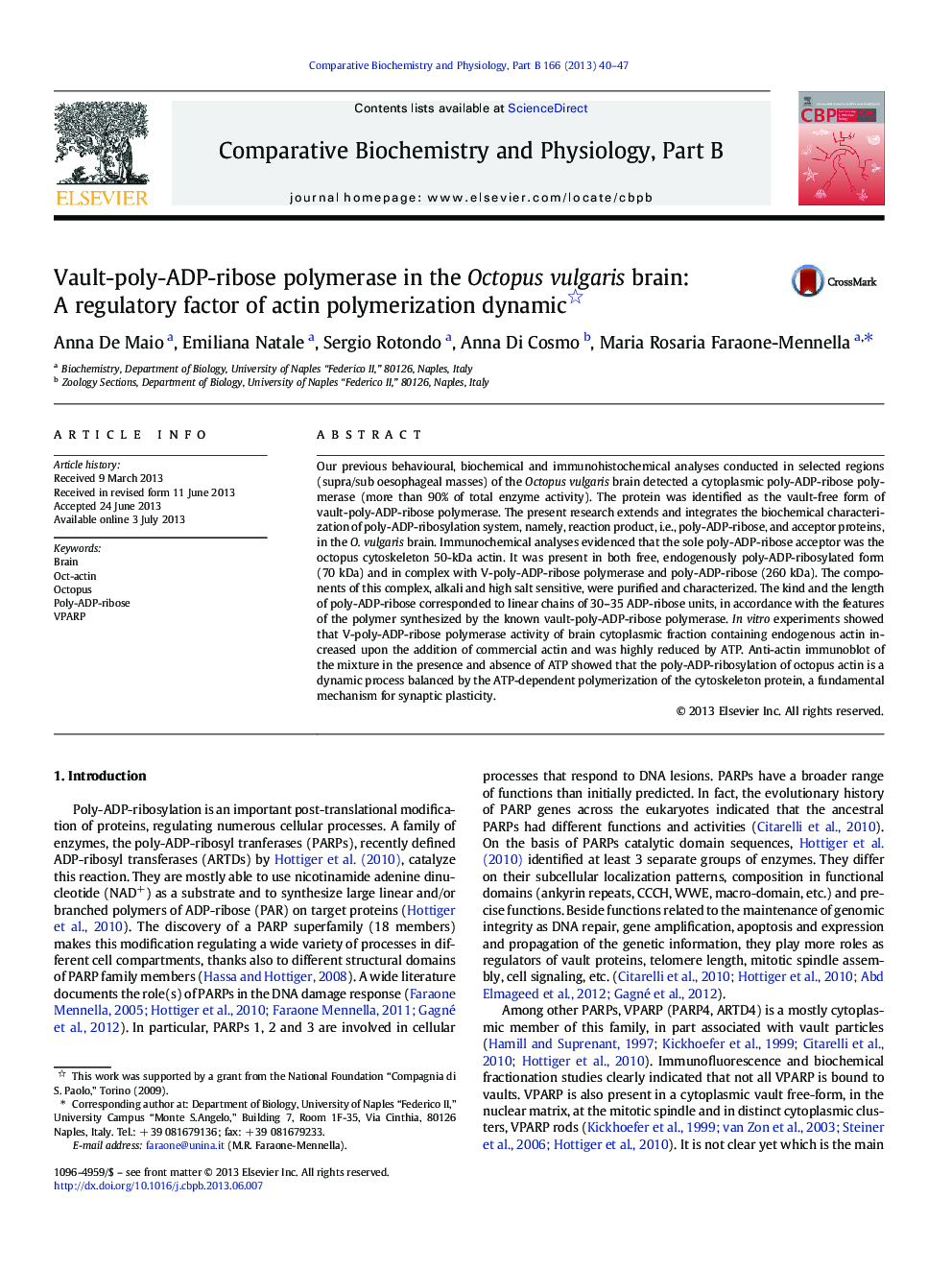| Article ID | Journal | Published Year | Pages | File Type |
|---|---|---|---|---|
| 1975377 | Comparative Biochemistry and Physiology Part B: Biochemistry and Molecular Biology | 2013 | 8 Pages |
Our previous behavioural, biochemical and immunohistochemical analyses conducted in selected regions (supra/sub oesophageal masses) of the Octopus vulgaris brain detected a cytoplasmic poly-ADP-ribose polymerase (more than 90% of total enzyme activity). The protein was identified as the vault-free form of vault-poly-ADP-ribose polymerase. The present research extends and integrates the biochemical characterization of poly-ADP-ribosylation system, namely, reaction product, i.e., poly-ADP-ribose, and acceptor proteins, in the O. vulgaris brain. Immunochemical analyses evidenced that the sole poly-ADP-ribose acceptor was the octopus cytoskeleton 50-kDa actin. It was present in both free, endogenously poly-ADP-ribosylated form (70 kDa) and in complex with V-poly-ADP-ribose polymerase and poly-ADP-ribose (260 kDa). The components of this complex, alkali and high salt sensitive, were purified and characterized. The kind and the length of poly-ADP-ribose corresponded to linear chains of 30–35 ADP-ribose units, in accordance with the features of the polymer synthesized by the known vault-poly-ADP-ribose polymerase. In vitro experiments showed that V-poly-ADP-ribose polymerase activity of brain cytoplasmic fraction containing endogenous actin increased upon the addition of commercial actin and was highly reduced by ATP. Anti-actin immunoblot of the mixture in the presence and absence of ATP showed that the poly-ADP-ribosylation of octopus actin is a dynamic process balanced by the ATP-dependent polymerization of the cytoskeleton protein, a fundamental mechanism for synaptic plasticity.
